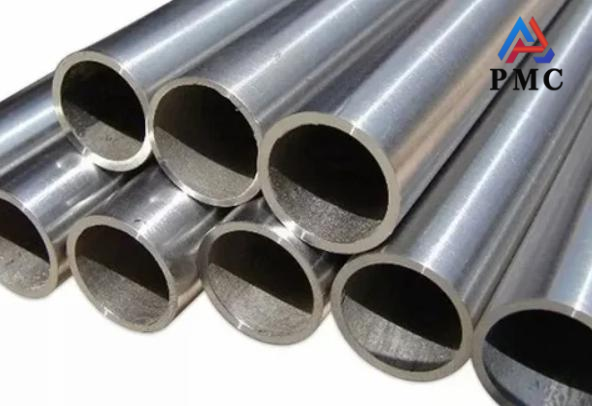
How to Identify the Material and Specifications of SMLS Steel Pipes?
Identify the material of smls steel pipe
There are many types of materials for smls steel pipes, the most common ones are carbon structural steel, alloy structural steel, stainless steel, etc. There are mainly the following methods to identify the materials of seamless steel pipes:
1. Stamps and Marks
Regular seamless steel pipe manufacturers will roll or spray stamps and marks on the surface of the steel pipe to indicate the brand (i.e. material), specification, production batch number and other information of the steel pipe. This is the most direct and reliable identification method. For example, the marking method of steel pipes is specified in the GB/T 8162-2018 standard. It should be noted that some unscrupulous merchants may forge steel stamps and marks, so you cannot rely solely on the steel stamp, and you need to combine other methods to make a comprehensive judgment.
2. Chemical composition analysis
Through chemical analysis methods, the content of various elements in the steel pipe, such as carbon (C), silicon (Si), manganese (Mn), phosphorus (P), sulfur (S), chromium (Cr), nickel (Ni), etc., can be detected. The specific grade of the steel pipe can be determined based on the chemical composition.
Chemical composition analysis requires professional equipment and technicians, and generally needs to be entrusted to a professional testing agency.
3. Mechanical properties test
Through tensile test, impact test, hardness test and other mechanical property tests, the yield strength, tensile strength, elongation, impact toughness, hardness and other mechanical property indicators of the steel pipe are detected. According to the mechanical property indicators, the material range of the steel pipe can be preliminarily determined.
Mechanical properties testing also requires professional equipment and technicians, and generally needs to be entrusted to a professional testing agency.
4. Metallographic inspection
The metallographic structure of the steel pipe is observed through a metallographic microscope, such as grain size, organizational morphology, etc. Different materials have different metallographic structural characteristics. Metallographic inspection can assist in determining the material of the steel pipe. Metallographic inspection also requires professional equipment and technicians.
5. Appearance observation and experience judgment
Steel pipes of different materials may have some differences in color, gloss, etc. Experienced personnel can make a preliminary judgment by appearance observation. For example, stainless steel usually has a silvery-white luster. By knocking on the steel pipe, you can also make a preliminary judgment based on the sound. For example, the knocking sound of high-carbon steel is usually crisp. It should be noted that appearance observation and empirical judgment can only be used as auxiliary methods and cannot be used as the final basis for judgment.

Identify the specifications of smls steel pipes
The specifications of seamless steel pipes are usually expressed in terms of outer diameter (D), wall thickness (S) and length (L). There are several main methods for identifying the specifications of seamless steel pipes:
1. Measurement
Use measuring tools such as vernier calipers and micrometers to directly measure the outer diameter and wall thickness of the steel pipe.
Use a tape measure or steel ruler to measure the length of the steel pipe.
2. Check the standard
According to the brand and purpose of the steel pipe, refer to the relevant national standards or industry standards, such as GB/T 8162-2018 "Seamless Steel Pipe for Structural Use", GB/T 8163-2018 "Seamless Steel Pipe for Fluid Transportation", etc. The standard specifies the size range and allowable deviation of various specifications of steel pipes. By consulting the standards, you can confirm whether the specifications of the steel pipe meet the requirements.
3. Mark
Some manufacturers will mark specification information on the surface of the steel pipe, such as "Φ108×4" (indicating an outer diameter of 108mm and a wall thickness of 4mm).
Comprehensive Application
In practical applications, it is usually necessary to use the above methods in combination to identify the material and specifications of seamless steel pipes.
For example, you can first make a preliminary judgment based on the steel stamp and marks, and then confirm the specifications through measurement. If you have any questions about the material, you can entrust a professional testing agency to conduct chemical composition analysis or mechanical properties testing.
In summary, identifying the material and specifications of seamless steel pipes requires the comprehensive use of multiple methods, including observation, measurement, reference to standards, chemical analysis, mechanical properties testing, etc. When selecting seamless steel pipes, appropriate materials and specifications should be selected according to specific application requirements to ensure project quality and safety.
Read more: Characteristics and Applications of American Standard SMLS Steel Pipes


